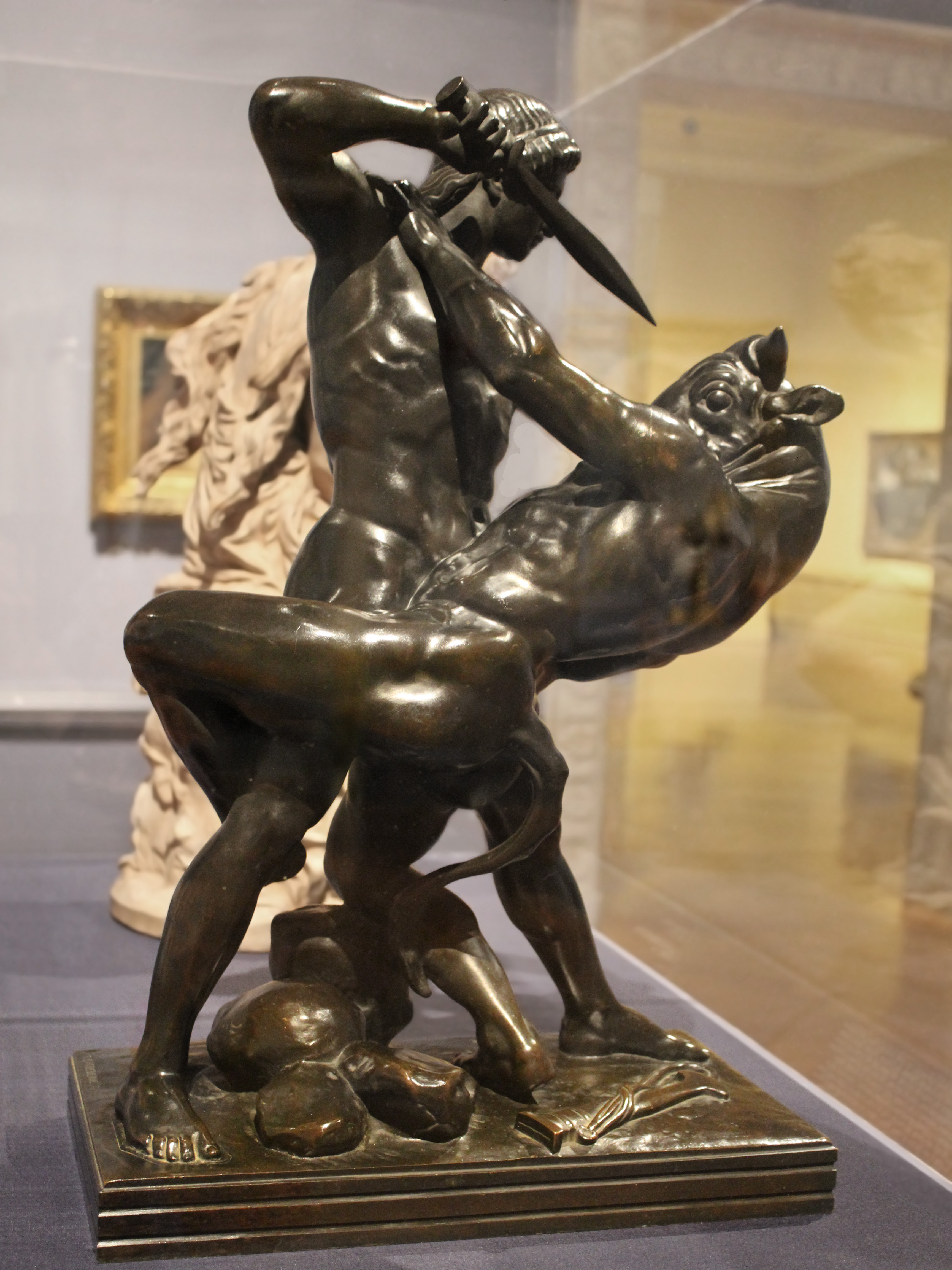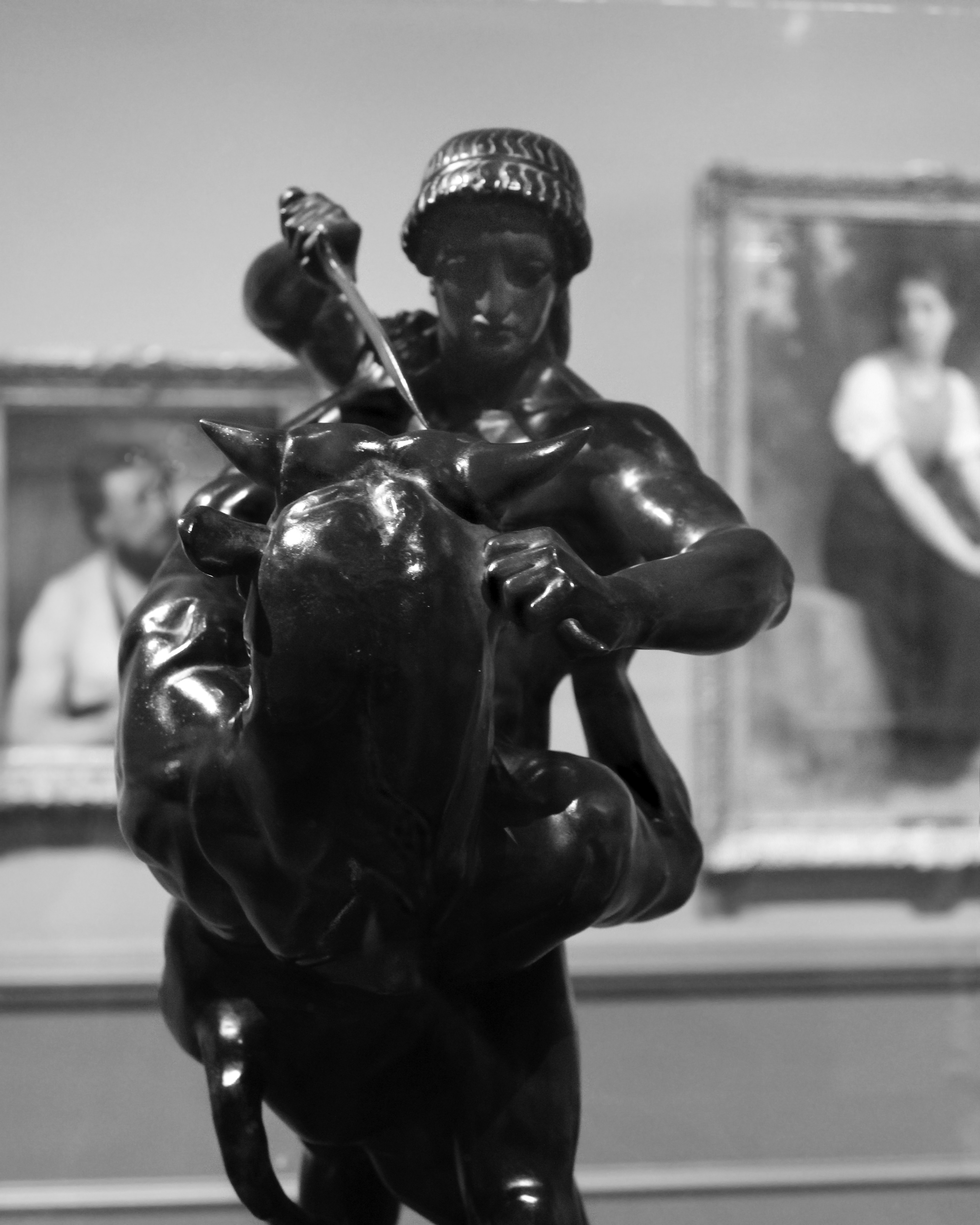
Wednesday, May 8, 2019
Still More Beauties Seen at Dayton Art Institute
7:31pm
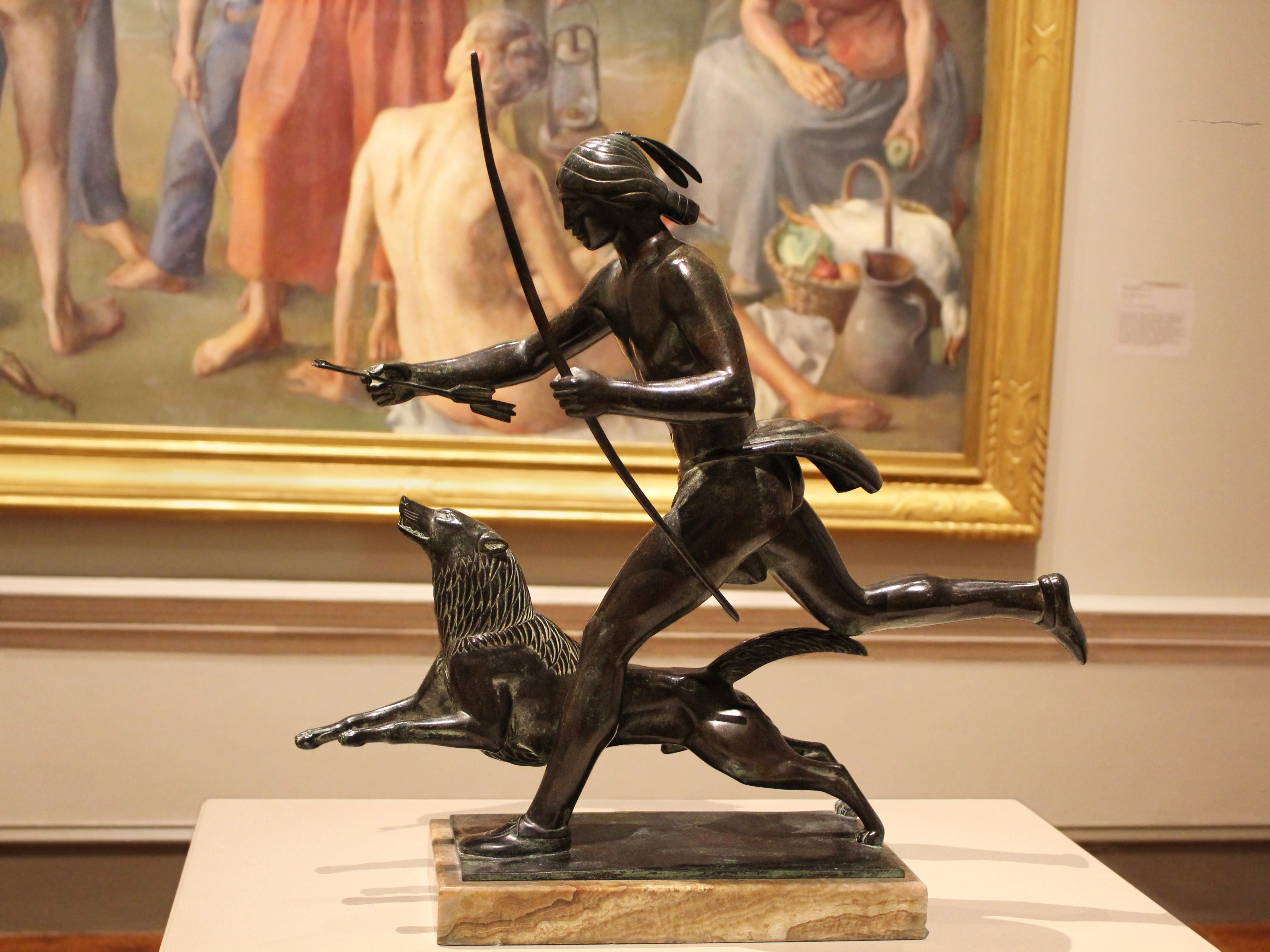
Native American Hunter with His Dog, 1906
Paul Manship, St. Paul, Minnesota 1885 - 1966 New York, New York
Bronze with marble base
Bequest of the Honorable Jefferson Patterson, Dayton Art Institute, #1979.96
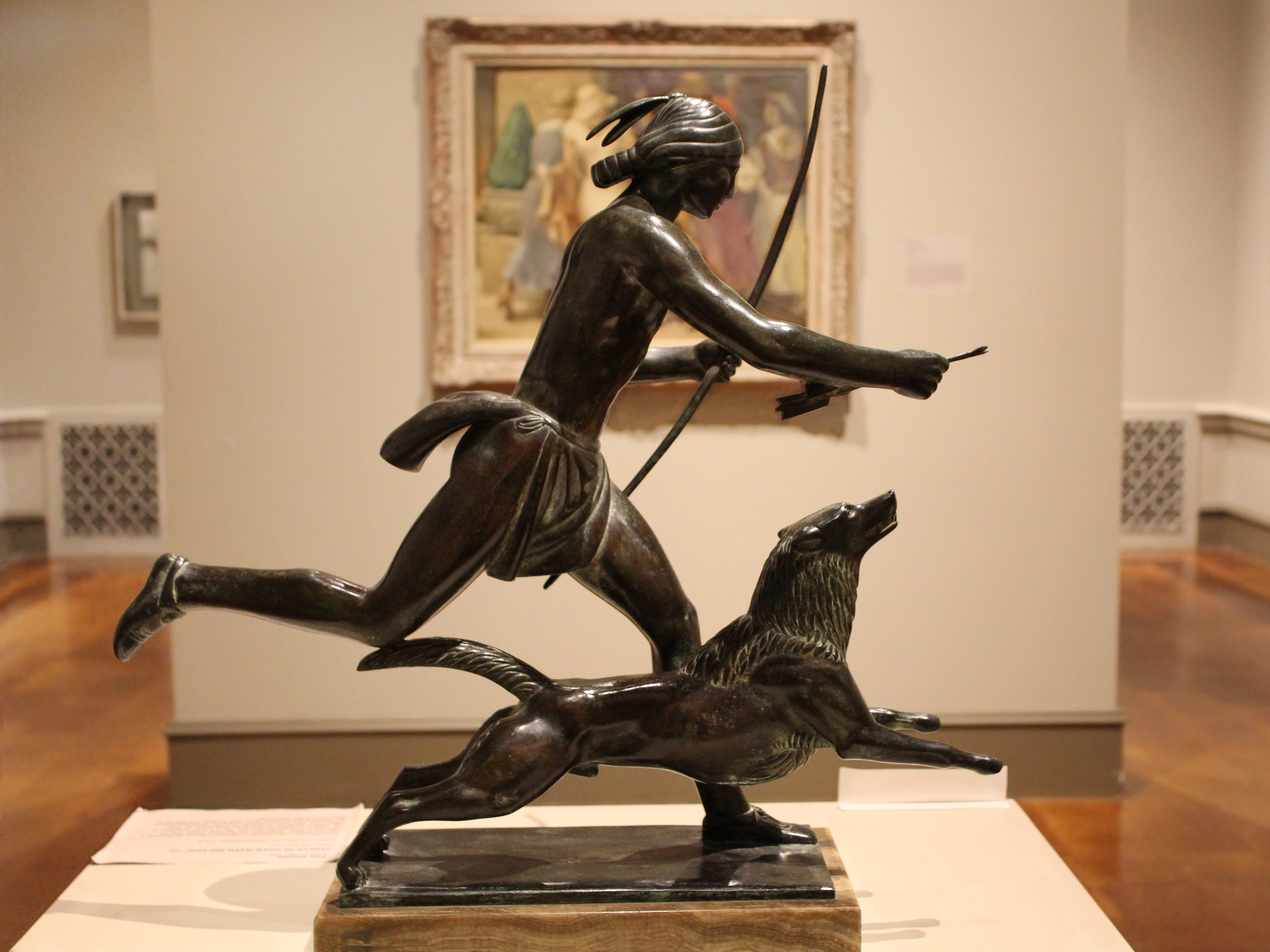
"Paul Manship's streamlined sculptures reflected Modernism's interest in sleek, simplified, and rhythmic forms. One of Manship's most popular bronzes, this is a scale reduction of the outdoor sculpture located in his hometown, St. Paul, Minnesota. This work remained a favorite, reminding him of his boyhood and summers spent duck hunting and fishing at Bald Eagle Lake, Minnesota." (From info card)
"Early in his career Manship became attracted to animal sculptures and showed a great interest in mythical stories and characters. He became known for his freely modeled forms and dramatic gestures. "I like to express movement in my figures. It's a fascinating problem which I'm always trying to solve," he said. He also noted, "I'm not especially interested in anatomy, though naturally I've studied it. And, although I approve generally of normally correct proportions, what matters is the spirit which the artist puts into his creation—the vitality, the rhythm, the emotional effect."" (Smithsonian American Art Museum website bio)
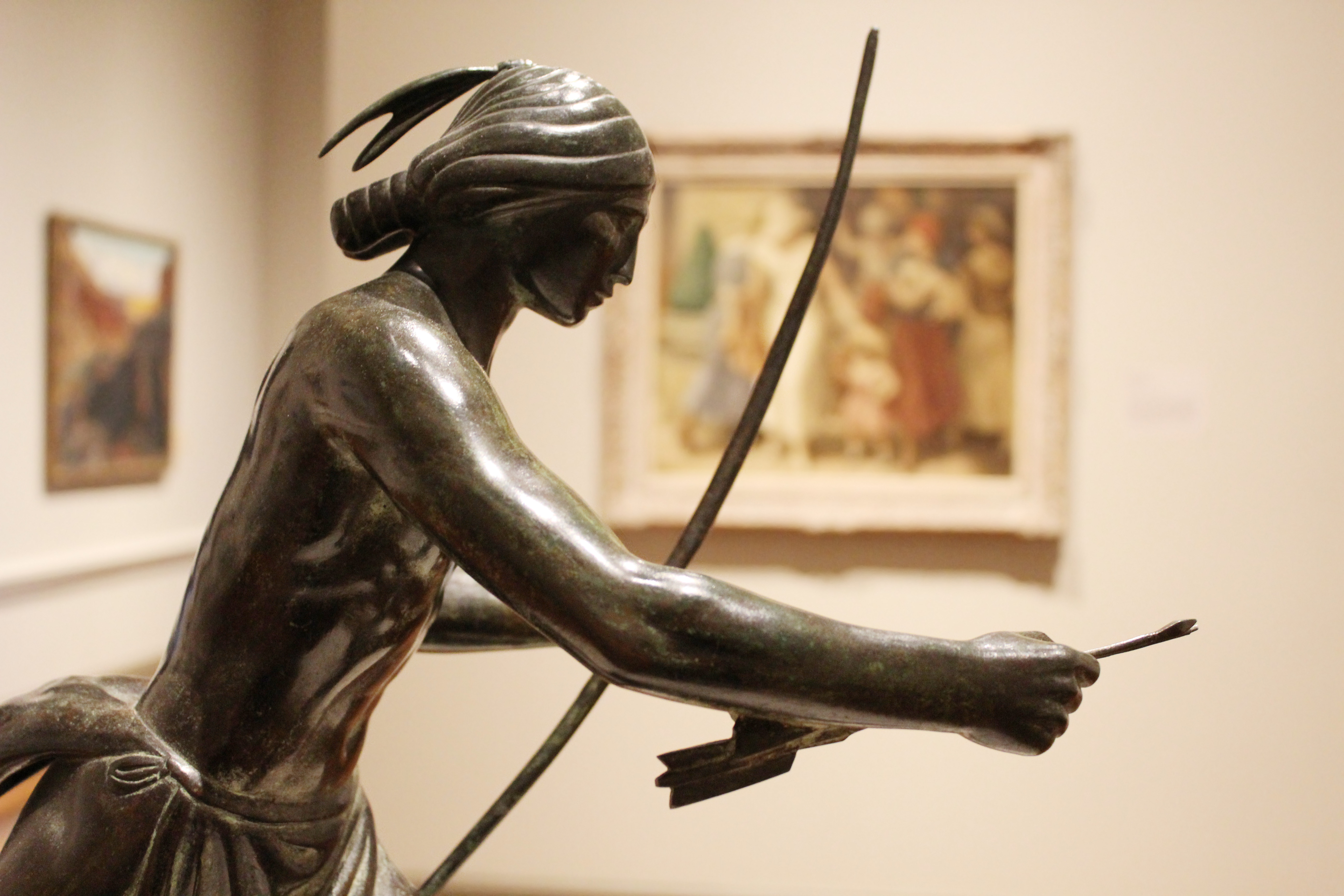
Manship was a member of the National Academy of Design and even was its vice president from 1944-1946. He also served on the board of the Smithsonian American Art Museum and chaired the board. Furthermore, Manship was affiliated with the National Sculpture Society, and the American Academy of Arts and Letters. He served on the U.S. Commission of Fine Arts from 1937 to 1941. He received many awards and "according to Manship’s wishes, at his death the contents of his studio were divided between the National Museum of American Art (now the Smithsonian American Art Museum), Washington, D.C., and the Minnesota Museum of Art, Saint Paul."(NAD website info)
And now we go from a peaceful free romp in the woods to an outright battle:
Barye was a Romantic French sculptor most famous for his work as an "animalier", a sculptor of animals.
It "was not until 1823, while working for the goldsmith Emile Fauconnier that he discovered his true predilection from watching the animals in the Jardin des Plantes, making vigorous studies of them in pencil drawings comparable to those of Delacroix, then modeling them in sculpture on a large or small scale." 
"This sculpture is based on the ancient story of the Greek hero Theseus who journeyed to the island of Crete to slay the Minotaur. By killing the Minotaur, Theseus rescued young children who were to be fed to this half-human, half-bull monster who lived in a dark underground maze called the labyrinth. The artist shows Theseus as strong and determined, undaunted by the creature's claws tearing into his shoulder. Barye's sculpture is a dramatic presentation of the classic ideal hero--a person not only of strength and courage, but one who risks his or her own life for a greater good, in this case to save the lives of others. Barye's success in conveying the triumph of Theseus, both physically and morally, led the French critics of his time to call this work a masterpiece. Barye continues to be recognized today as a master storyteller in bronze." (From info card) The lady who seems to be peacefully observing the battle, from a safe distance:
Bouguereau "was a French academic painter. In his realistic genre paintings he used mythological themes, making modern interpretations of classical subjects, with an emphasis on the female human body.[1] During his life he enjoyed significant popularity in France and the United States, was given numerous official honors, and received top prices for his work.[2] As the quintessential salon painter of his generation, he was reviled by the Impressionist avant-garde.[2] By the early twentieth century, Bouguereau and his art fell out of favor with the public, due in part to changing tastes.[2] In the 1980s, a revival of interest in figure painting led to a rediscovery of Bouguereau and his work.[2] Throughout the course of his life, Bouguereau executed 822 known finished paintings, although the whereabouts of many are still unknown." (Source: Wikipedia) "Bouguereau is one of the few prominent academic artists of late nineteenth-century France whose reputation has endured following the rise of Impressionism. His characteristically smooth finish, carefully drawn and composed figures, and convincing illusionism made him one of the most successful academic painters of his generation. From 1849 until his death in 1905, he exhibited regularly at the annual Salon. In 1850, he won the coveted Prix de Rome, a prize awarded yearly to promising artists that enabled them to study in Italy. In 1876, he was elected a member a both of both the Legion d'Honneur and the Institut de France, confirming his high standing among the conservative artistic establishment. This work of 1895 is typical of both Bougereau's style and subjects. Skillfully painted, it shows a beautiful peasant girl, barefoot, her sleeves rolled up, seated on a stone bench. On a tree branch behind her shoulder a nightingale sings, and she turns her head to hear it. What her thoughts may be are hard to determine, and this ambiguity was one of the reasons for Bouguereau's success. Viewers are left to create their own stories about what is taking place in the painting. His realistic rendition of every element of the scene vouches for what he described as his commitment to 'the sincer study of nature, the search for the true and the beautiful.'"(From info card)
|
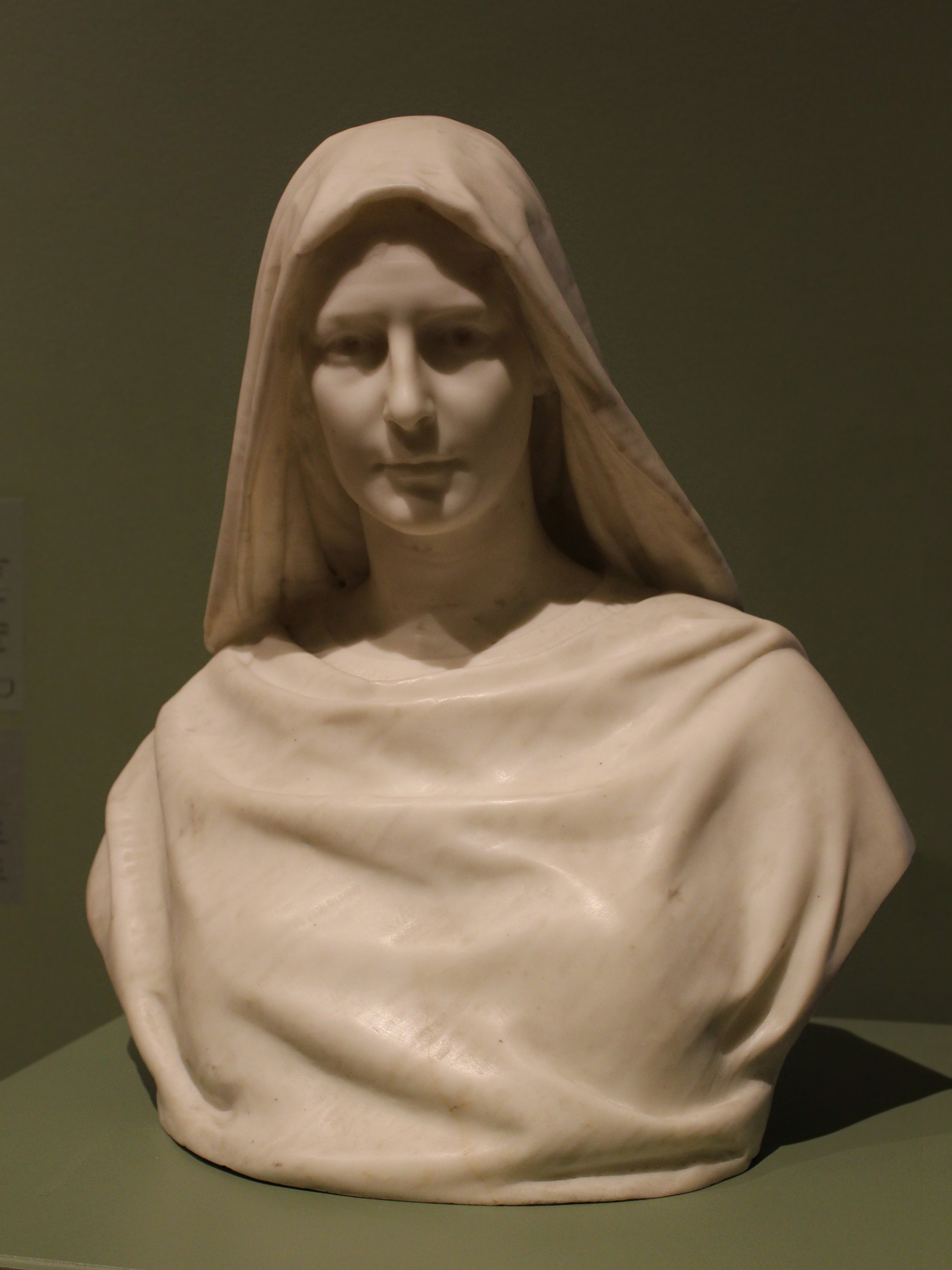 Madonna in her Maturity, 1892 William Ordway Partridge, Born in Paris to American parents, 1861-1930 Manhattan, New York Marble Gift of Mrs. Charles Harries Simms, Dayton Art Institute #1942.30  "William Ordway Partridge's wife served as the model for this bust, which is both naturalistic and idealistic. By representing the Madonna in middle age (about age 35 in the 1890s), the artist makes her appear as a specific individual. Yet, her polished skin also makes her seem removed from everyday existence. This stylistic balance between depicting a real person, but one relatively untouched by time, communicates the special nature of Mary's role.""(From info card) Fascinating, when Partridge went abroad, he had "a brief stint in the Paris studio of William-Adolphe Bouguereau". "His published work includes articles on aesthetics and several art history books including Art For America (1894), The Song Life of a Sculptor (1894), and The Technique of Sculpture (1895). He also wrote poems and published the verse novels Angel of Clay (1900) and The Czar's Gift (1906).[3] "Aside from his public commissions, his work consisted mostly of portrait busts."(Source: Wikipedia)

Lou Harries, Age 3, c. 1860s Clara Soule, American, 1835-1902 Gift of Mr. and Mrs. Edward U. Kemp, DAI #1950.25 |
 The Fugitive's Story, 1869 John Rogers, Salem, Massachusetts 1820-1904 New Canaan, Connecticut Plaster and paint Gift of Dr. A. Richard Kent, Dayton Art Institute #1946.15 |
